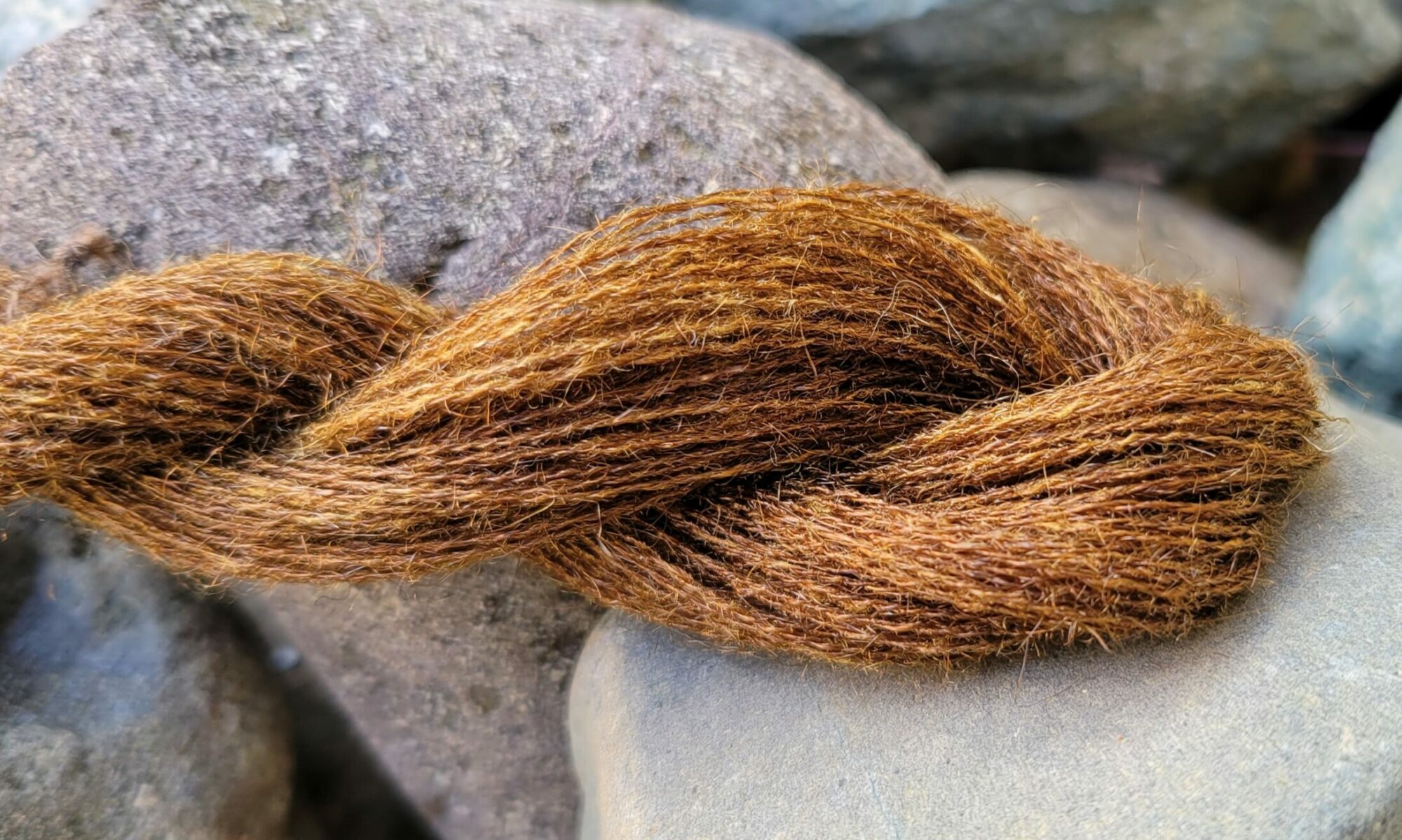Why Pinna Nobilis?
Pinna nobilis, also called the Noble Pen Shell, is a large species of bivalve mollusk found in the Mediterranean Sea. This clam can grow to be up to four feet in length. It attaches itself to rocks and the sea floor using silk-like threads called byssus that can grow up to 2.5 inches (6 centimeters) in length. The exact origin of byssus textiles is unknown, but it is hypothesized that byssus textiles developed from the byproduct of fishing Pinna nobilis for food. I believe that in a time when home textile production was ubiquitous, the length of these fibers, their silky qualities, and their metallic sheen would have been appealing to spinners in a fishing community. Their fibers are not unique to this species, however, and similar qualities can be found across the Pinnidae family.
Pen clams are fascinating creatures that form symbiotic relationships with companion animals, often shrimp or crabs, that live within them and help to keep them clean. However, they are still susceptible to pollution and disease, and Pinna nobilis has suffered great population loss in recent years. Extraction has been illegal throughout the Mediterranean as early as 1977, and the European Council strictly protects Pinna nobilis today. Over the last ten years, due to pathogens, pollution, and trawling, Pinna nobilis populations have declined over 80%. In 2019, Pinna nobilis was listed as critically endangered.
What Works Instead?
I have found that both Atrina rigida and Atrina pectinata species of pen clams can be used to produce textiles. I hypothesize that many other species within the Pinnidae family can be used. As long as the fibers are greater than one inch (2.5 centimeters) in length, I believe that they can be used to produce beautiful textiles with qualities similar to those of Pinna nobilis.
However, the threats that endangered the Pinna nobilis are a risk to other pen clam colonies throughout the world. Any threat to the animal itself, or to its companion animal, could kill an entire colony quickly, including pollution, rising ocean temperatures, and drought. In 2018, I travelled to the coast of North Carolina and, under the supervision of a marine biologist and a clam farmer, I harvested 10 Atrina rigida. In 2023, a mere five years later, I returned to the site to find that the entire colony had died. It was unclear what wiped out the colony. The seabed was a pen clam graveyard of broken shells. The one live shell that we were able to identify was broken, dying, and missing its companion animal. My guides hypothesized that recent droughts have caused increased salinity, which has been damaging whole ecosystems along the eastern US coast. With the threats that climate change pose, it is vital that we only source byssus from colonies that are healthy and strong.
Promising Fishing Industries
Today, species of the Pinnidae family are farmed and consumed in Japan, South Korea, Polynesia and several other Pacific Island groups, and on the west coast of Mexico. These industries create a promising source for byssus fiber as a byproduct and additional source of income. Whole animals with intact fibers can be found live in markets within these nations today.
